AI Cybersecurity 2025: Protect Your Small Business Today
In 2025, artificial intelligence (AI) has become a cornerstone of cybersecurity, offering both opportunities and challenges. While AI empowers businesses to strengthen their defenses, it also enables attackers to create more sophisticated and targeted threats. This dual use of AI can feel like navigating a double-edged sword for businesses. However, with careful planning and the right tools, small businesses can leverage AI to build robust security systems without overstretching their resources.
At iFeeltech, with over 20 years of IT experience, we’ve learned that cybersecurity is a moving target. Technology evolves rapidly, and staying secure requires constant adaptation. Sometimes, simply following trends is enough to stay protected. But with AI advancing so quickly, cybersecurity is becoming more fragmented, with countless tools and systems available. That’s why we advocate for simplicity—streamlining your tech stack makes managing and protecting your systems easier.
This article explores how attackers and defenders use AI in cybersecurity, why small businesses are often targeted, and how they can implement affordable AI-driven solutions. Small businesses can navigate this complex landscape by focusing on simplicity and fundamentals while staying ahead of evolving threats.
| Key Area | Takeaway |
|---|---|
| AI in Cybersecurity | AI is a double-edged sword—while it enhances defenses, attackers also use it to create smarter threats. |
| Why Small Businesses? | Small businesses are targeted due to limited resources, outdated systems, and growing reliance on digital tools. |
| Simplify, Don’t Overload | A streamlined tech stack is easier to manage and protects better than a cluttered system. Focus on essentials. |
| Recommended Tools | Combine solutions like the Unifi Dream Machine (with Proofpoint), ThreatDown, and built-in Google/Microsoft security. |
| Employee Training | Even with AI tools, human error is a risk. Train employees on phishing, MFA, and basic cybersecurity practices. |
| Future Trends | Expect more predictive AI tools, Zero Trust adoption, and simplified platforms for small business security. |
Table of Contents
The Role of AI in Cybersecurity
AI is transforming cybersecurity by automating processes, detecting threats faster, and adapting to new attack methods. However, its dual-use nature means that both defenders and attackers are leveraging its capabilities in increasingly sophisticated ways.
How Hackers Are Using AI
Cybercriminals are exploiting AI to enhance the scale, precision, and effectiveness of their attacks:
- Phishing at Scale: Attackers use AI to craft highly convincing phishing emails that mimic human communication styles or leverage personal data scraped from social media. These emails are tailored to trick recipients into revealing sensitive information.
- Adaptive Malware: Malware powered by AI can adapt its behavior in real time to evade detection by traditional antivirus systems. This makes it harder for static defenses to keep up.
- Deepfake Technology: AI-generated deepfake videos or audio files are being used to impersonate trusted individuals such as CEOs or business partners. These scams can lead to unauthorized transactions or data breaches.
- Automated Vulnerability Scanning: Hackers deploy AI tools to scan networks for vulnerabilities at scale, identifying weak points far faster than manual methods.
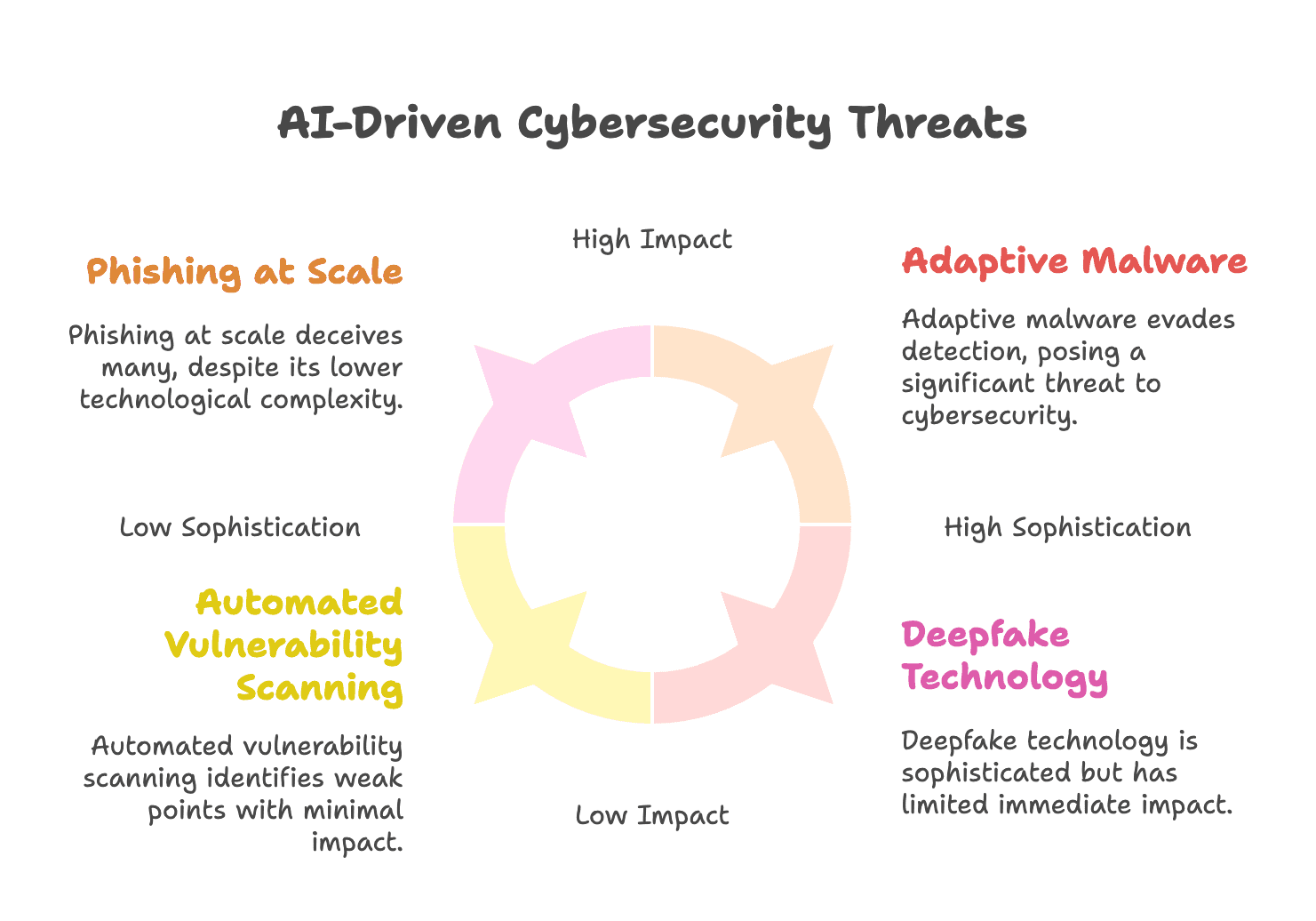
These developments highlight the growing sophistication of cyber threats. At iFeeltech, we’ve observed that staying ahead of these risks requires not just adopting advanced tools but also simplifying your tech stack to minimize vulnerabilities.
How Defenders Are Leveraging AI
On the defensive side, AI offers powerful tools that allow businesses—regardless of size—to enhance their security posture:
- Real-Time Threat Detection: AI systems monitor network activity continuously, identifying anomalies that could indicate potential attacks. This proactive approach reduces detection times significantly.
- Automated Incident Response: Once a threat is detected, many AI-driven tools can take immediate action—such as isolating affected devices or blocking malicious traffic—without waiting for human intervention.
- Predictive Analytics: By analyzing historical data and identifying patterns, AI helps businesses anticipate future threats and strengthen their defenses before attacks occur.
- Fraud Prevention: Tools powered by machine learning analyze transactional data for unusual activity patterns that may indicate fraud.
- Simplified Security Management: Solutions like the Unifi Dream Machine with Proofpoint’s Cyber Protect consolidate multiple security functions into one platform, making it easier for small teams to manage their defenses.
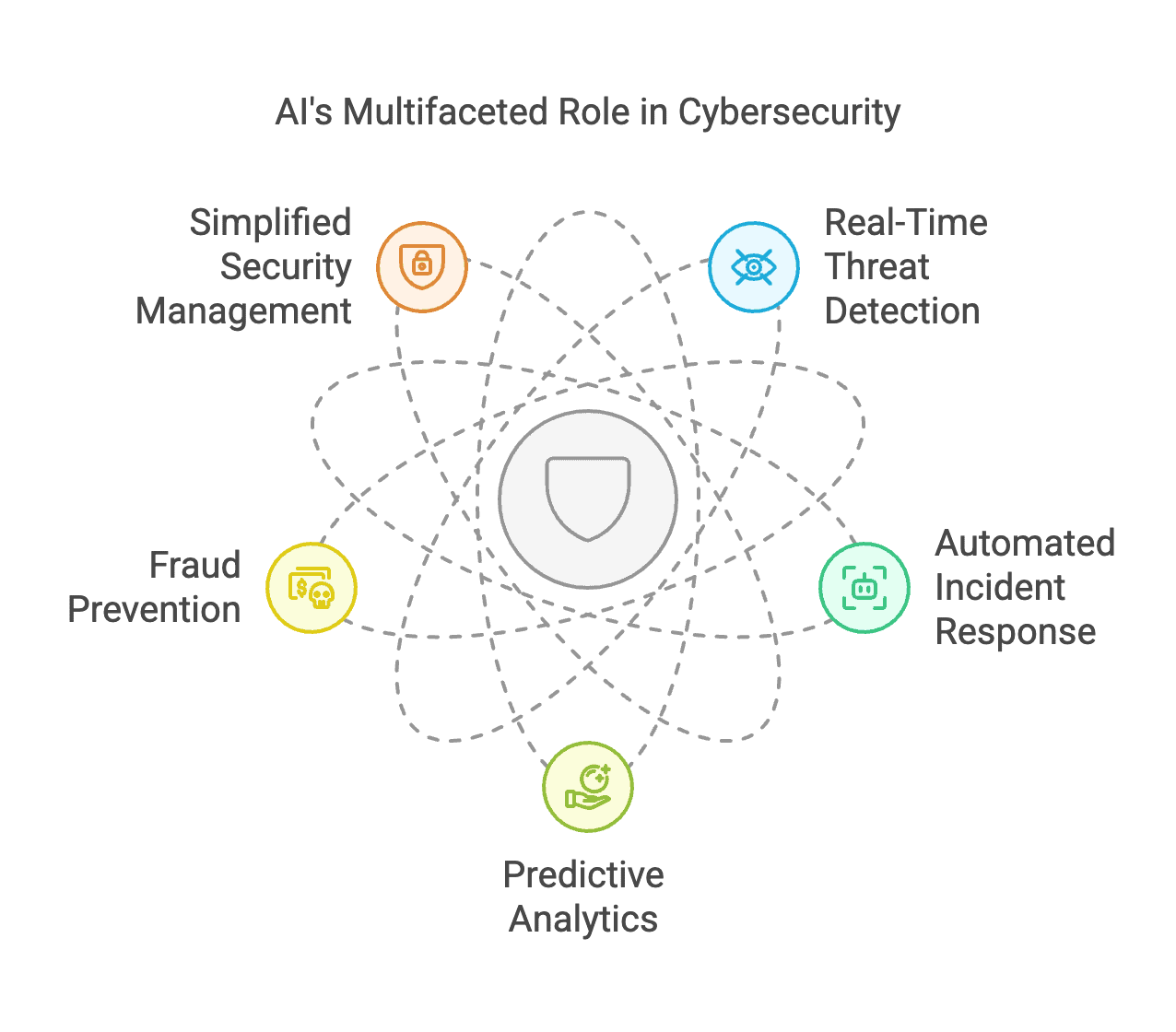
At iFeeltech, we’ve seen firsthand how these tools can simplify cybersecurity management for small businesses. When paired with a streamlined approach to IT systems, they enable even resource-constrained organizations to maintain strong defenses.
Why Small Businesses Are Targeted
Small businesses are often seen as easier targets by cybercriminals due to their limited resources and less sophisticated defenses. Understanding why small businesses are targeted can help them take proactive steps to mitigate risks.
1. Limited Resources
Many small businesses operate on tight budgets that prioritize daily operations over long-term investments in cybersecurity. This often results in outdated software or insufficient security measures that leave them vulnerable.
2. Outdated Systems
Older systems that no longer receive updates or patches are common in small businesses. These outdated technologies create entry points for attackers who exploit known vulnerabilities.
3. Expanding Digital Footprint
As small businesses adopt more digital tools—such as cloud services, remote work platforms, and online payment systems—their attack surface grows. Each new tool introduces potential vulnerabilities if not properly secured.
4. Lack of Awareness About Advanced Threats
Many small business owners underestimate how sophisticated modern cyberattacks have become. Threats like adaptive malware or deepfake scams may seem like issues only large corporations face but are increasingly targeting smaller organizations.
At iFeeltech, we’ve observed that simplifying IT systems can significantly reduce these risks. By focusing on core platforms with strong built-in security features—such as Google Workspace or Microsoft 365—and supplementing them with targeted tools like ThreatDown from Malwarebytes or Proofpoint-enabled solutions, small businesses can better protect themselves without unnecessary complexity.
Benefits of AI-Powered Cybersecurity for Small Businesses
AI-powered tools offer several advantages that make them particularly valuable for small businesses:
1. Cost Efficiency
AI-driven solutions like ThreatDown from Malwarebytes provide enterprise-level protection at an accessible price point. Cloud-based options further reduce costs by eliminating the need for expensive infrastructure.
2. Continuous Monitoring
Unlike human analysts who work limited hours, AI operates 24/7. It continuously monitors network activity for anomalies and potential threats—even during off-hours—ensuring no suspicious activity goes unnoticed.
3. Faster Detection and Response
AI excels at processing vast amounts of data quickly. This allows it to detect threats in real time and respond immediately by isolating affected systems or blocking malicious traffic.
4. Adaptability
Machine learning enables AI tools to evolve alongside emerging threats. By learning from past incidents and adapting to new attack patterns, these systems remain effective even as hackers innovate.
5. Simplified Management
At iFeeltech, we’ve found that one of the greatest benefits of AI is its ability to simplify security management. Consolidated solutions like the Unifi Dream Machine combine multiple functions—such as threat detection and firewall management—into one platform.
By focusing on tools that align with their specific needs and avoiding unnecessary additions to their tech stack, small businesses can achieve robust security without overextending their resources.
Actionable Steps for Implementing AI-Based Security
Implementing AI-driven cybersecurity doesn’t have to be overwhelming if approached methodically:
1. Assess Your Security Needs
Start by evaluating your current IT infrastructure:
- Identify critical assets such as customer data or intellectual property.
- Pinpoint vulnerabilities in outdated software or unprotected endpoints.
- Understand your most likely threats (e.g., phishing or ransomware).
A clear understanding of your security posture will help you choose solutions tailored to your needs.
2. Adopt Targeted Tools
Focus on solutions that provide comprehensive coverage without adding complexity:
- Use the Unifi Dream Machine with Proofpoint’s Cyber Protect for network-level protection.
- Deploy ThreatDown from Malwarebytes for endpoint security.
- Leverage built-in features in platforms like Google Workspace or Microsoft 365 for phishing prevention and access controls.
3. Integrate Tools Seamlessly
Ensure new tools work well with existing systems:
- Pair ThreatDown with Google Workspace’s security features for layered protection.
- Use Proofpoint-enabled solutions alongside your network infrastructure for streamlined management.
4. Train Employees
Educate staff on recognizing phishing attempts, using multi-factor authentication (MFA), and responding appropriately to alerts generated by security tools.
5. Monitor and Update Regularly
Cyber threats evolve rapidly; regular monitoring ensures your defenses remain effective:
- Apply updates promptly.
- Review system performance periodically.
- Adjust configurations based on emerging risks or changes in operations.
6. Start Small
Begin with essential tools before scaling up:
- Start with endpoint protection (e.g., ThreatDown).
- Gradually add network-level defenses (e.g., Unifi Dream Machine) as needed.
Future Trends in AI-Driven Cybersecurity
Looking ahead, several trends will shape cybersecurity:
- Proactive threat detection through predictive analytics.
- Increasingly sophisticated attacks leveraging deepfakes and adaptive malware.
- Simplification through consolidated platforms like Unifi Dream Machine.
- Zero Trust architecture becoming a standard approach.
- Enhanced cloud security driven by real-time monitoring and automated responses.
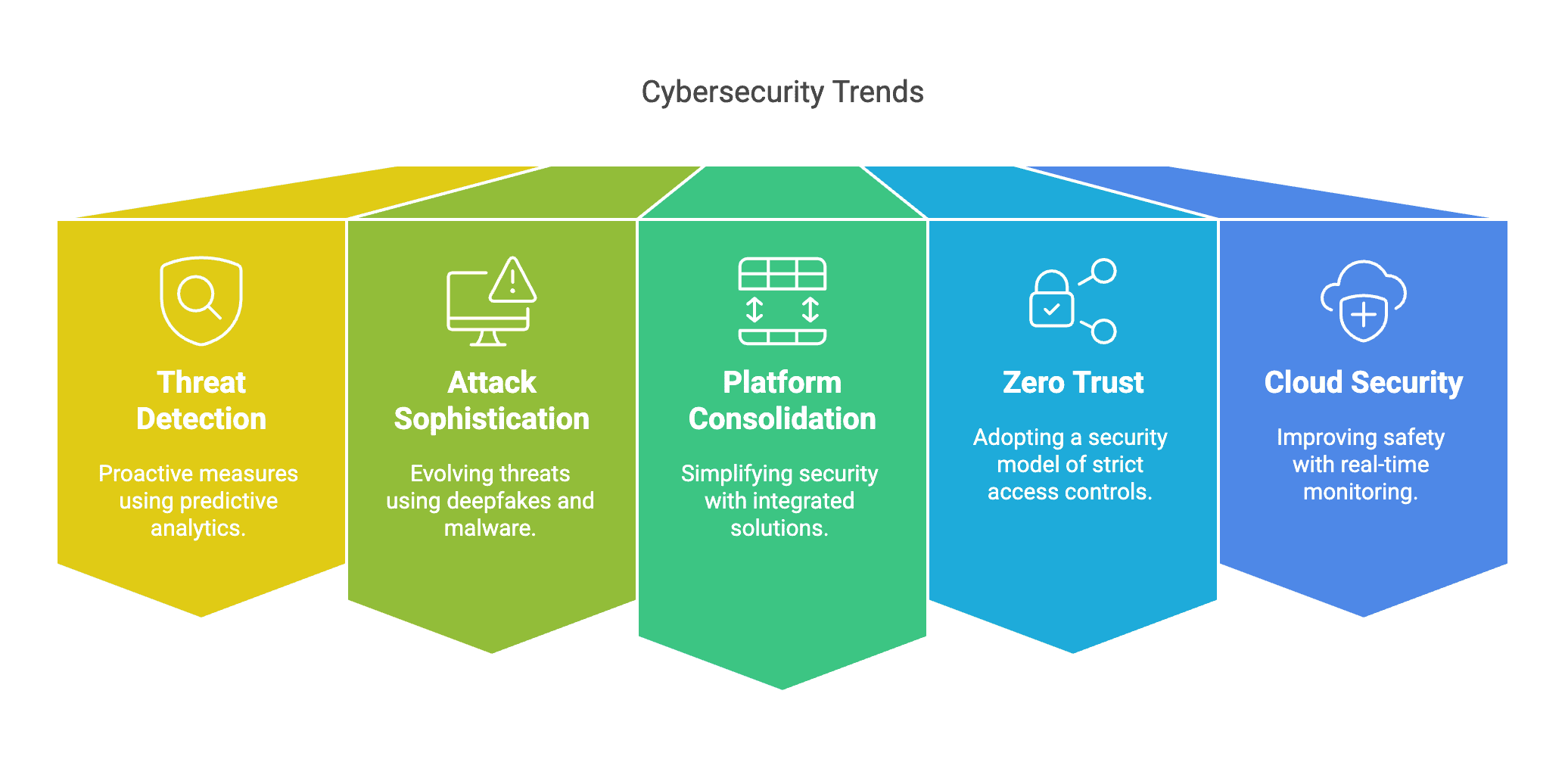
Conclusion
Cybersecurity is constantly evolving, but small businesses don’t need complex solutions to stay secure—they need smart ones. By adopting targeted tools like the Unifi Dream Machine with Proofpoint’s Cyber Protect or ThreatDown from Malwarebytes—and leveraging built-in protections from platforms like Google Workspace—businesses can create strong defenses without unnecessary complexity.
We’ve learned that less is often more when it comes to technology management. A streamlined approach not only simplifies oversight but also strengthens your ability to respond effectively to threats while maintaining peace of mind.
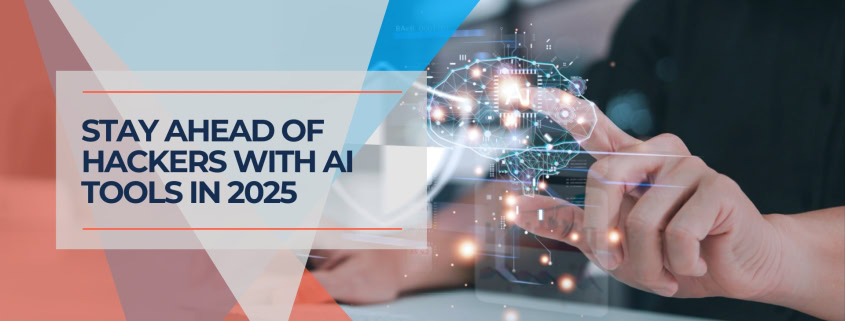


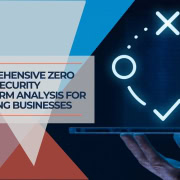


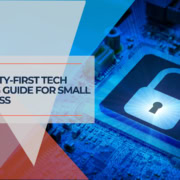




Leave a Reply
Want to join the discussion?Feel free to contribute!